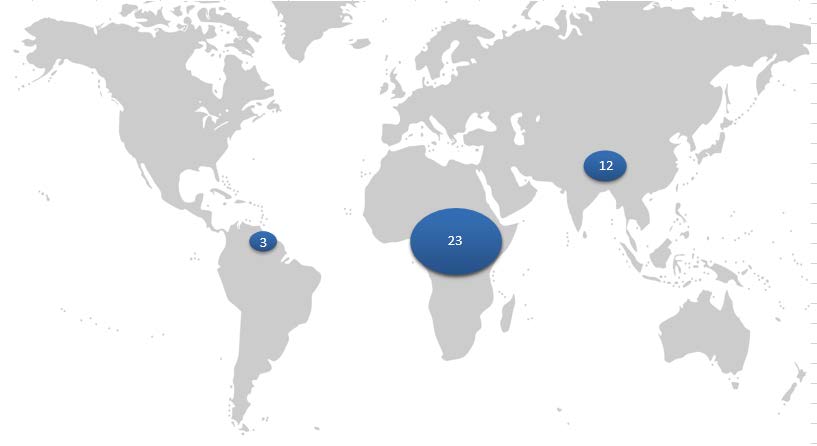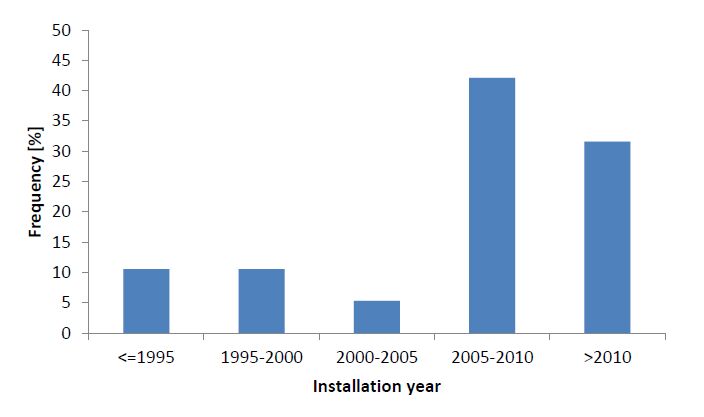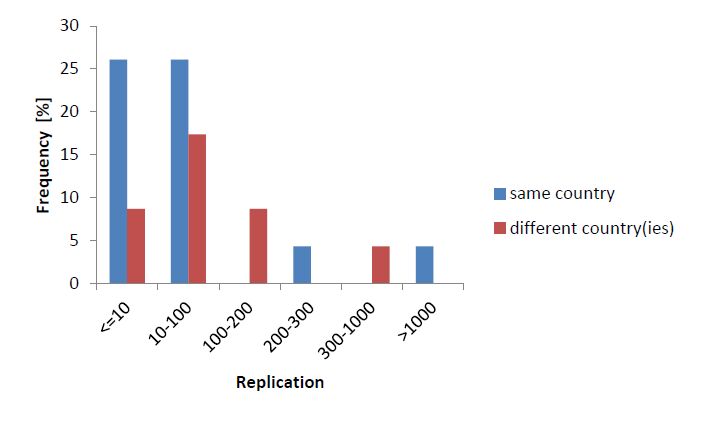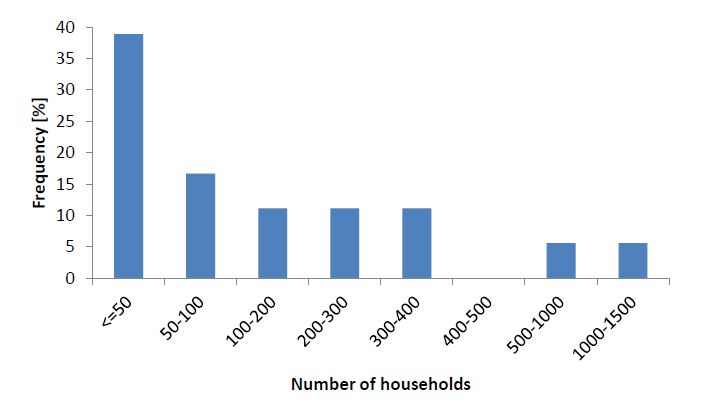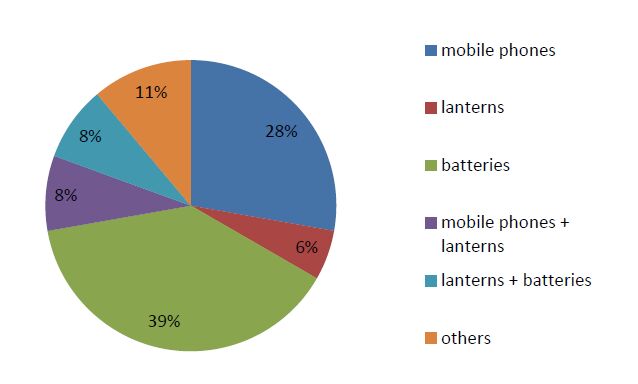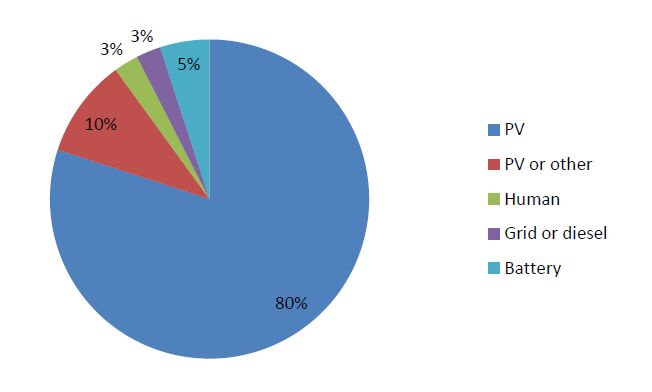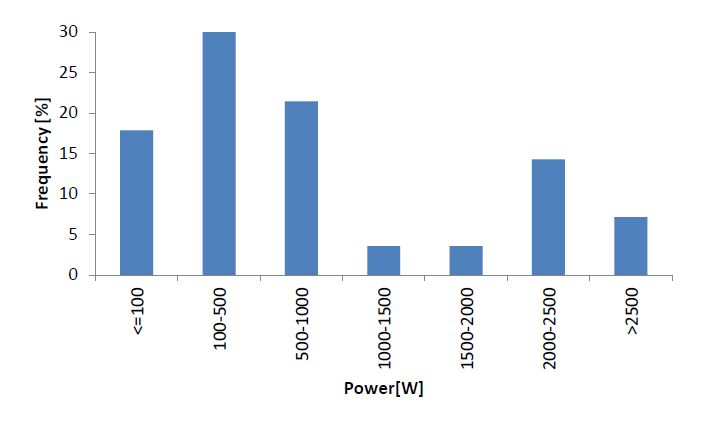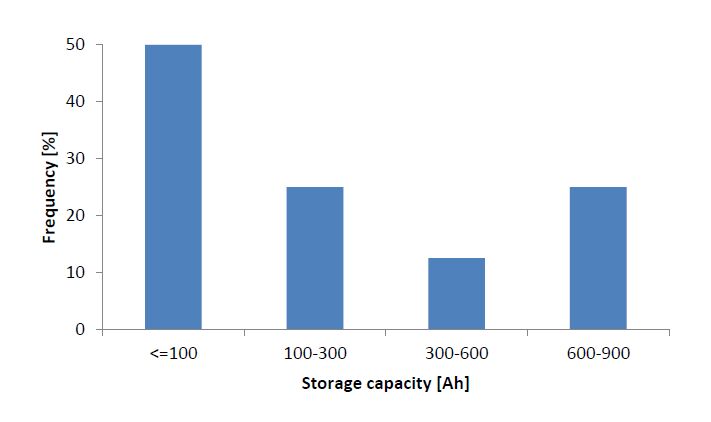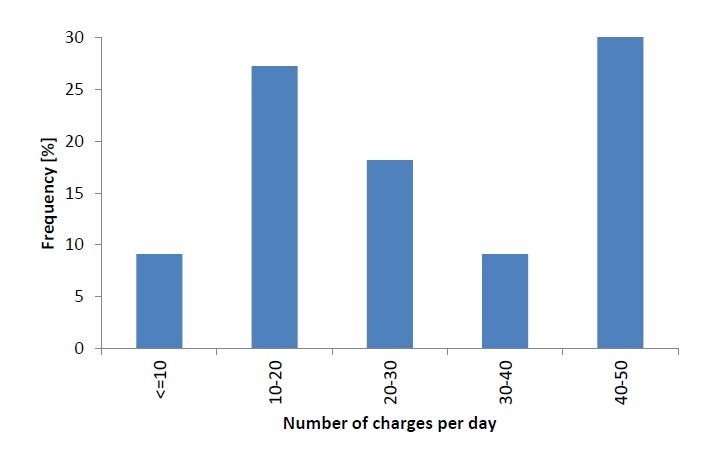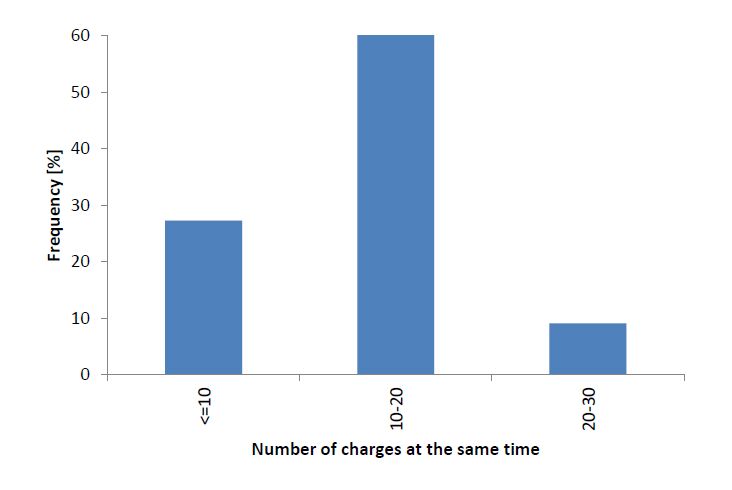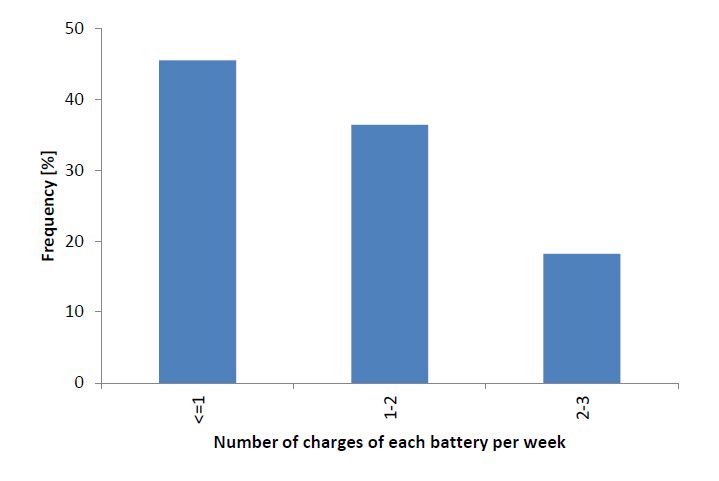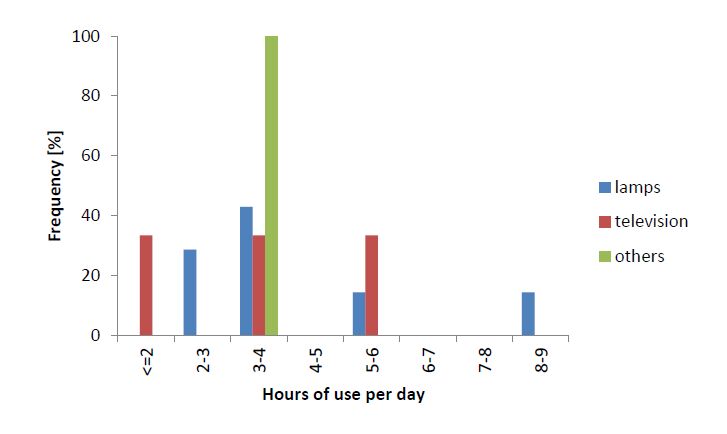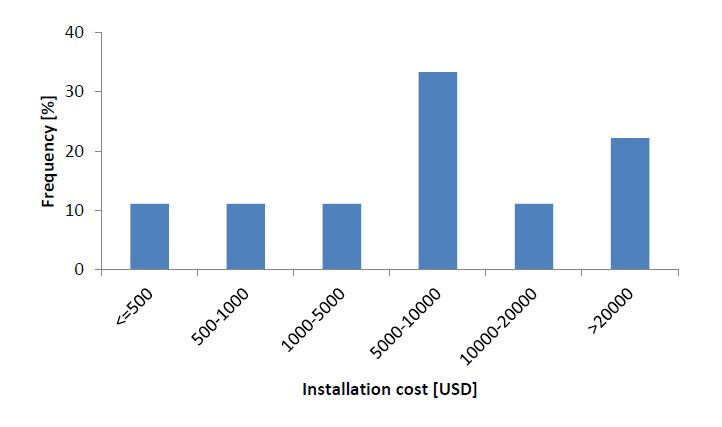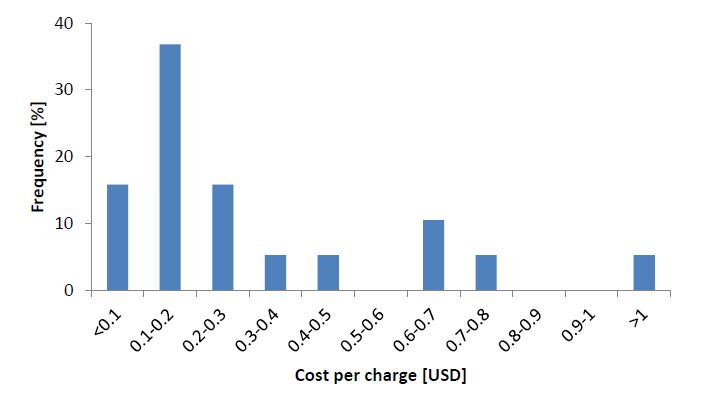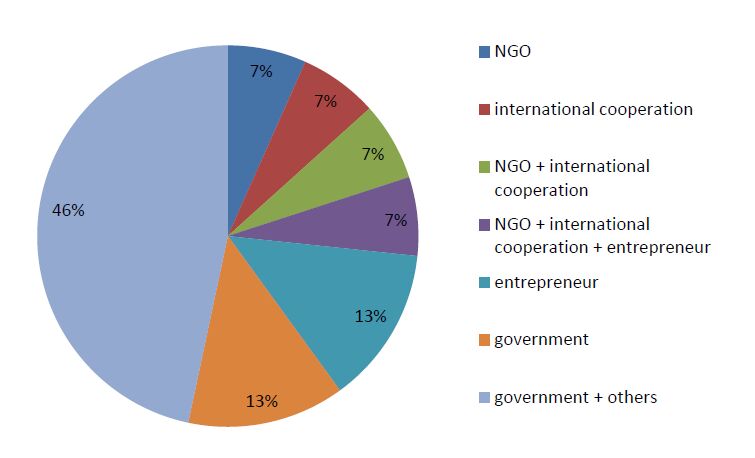Abbreviations:
CCS
Community Charging Station
DC
Direct Current
MP
Mobile Phone
NGO
Non-Governmental Organization
PCS
Privatised Charging Station
PV
Photovoltaic
SCS
Solar Charging Stations
SHS
Solar Home Systems
TV
Television
UNDP
United Nations Development Programme
USD
United States Dollar
1. Introduction
In 2014, 1.3 billion people in the world (18% of the world population) did not have access to electricity; nearly 97% of them lived in Sub-Saharan Africa and developing Asia [1]. As access to electricity is closely linked with human development, this access is essential to achieve many development goals related to poverty, education, equality, productivity, health, and environmental sustainability [2,3]. In fact, lighting and telecommunications are basic needs and people are willing to pay a large fraction of their income for these services [3]. Different options both on-grid and off-grid can be adopted to overcome the lack of access to electricity. The most appropriate type of solution for off-grid applications should take into consideration the answer to the following questions: 1) Who will use it?; 2) Who will build, run and own it?; 3) What will it charge?; 4) Who will finance it? [4].
Charging stations (or energy kiosks appear as an attractive solution in remote areas without grid connection, where people live with both low income and low energy demand [5]. Charging stations can be based on diesel or on renewable energies (mainly solar, but also wind and hydro) [6] and can charge mobile phones, batteries, lanterns and other electronic devices, as well as act as a shop or a cultural/recreational centre or provide additional services such as street lighting or electricity to a health centre. These stations can be property of the municipality or be owned by a private entrepreneur, local community, village organization or NGO. The user may pay a fee per charge or a monthly/weekly fee, having their own batteries/lanterns or just renting them [5]. To evaluate a charging station project, the following criteria should be addressed: 1) commercial viability, 2) positive community impacts, 3) dissemination of improved lighting, 4) the provision of credit [7].
This paper reviews the technical options for charging stations. After a general overview of the concept and its comparison with solar home systems (SHS), a different but comparable option to provide electricity access to off-grid low income remote populations, the main features of operating charging stations around the world are presented, highlighting the different technical options and challenges. It finally ends with a discussion and conclusions.
2. Methods
This work presents an extensive review of charging station projects around the world. It is not only based on a literature review of academic publications but also on a significant number of project reports, and the analysis of the replies to a direct questionnaire.
Firstly, a literature review of academic publications [7,8,9,10,11,12,13,14,15,16,17,18,19,20,21,22,23,24,25,26,27,28,29,30,31,32,33,34,35,36,37,38,39,40,41,42,43,44,45] was done, followed by the detailed analysis of project reports [4,5,46,47,48,49,50,51,52]. Then, an online search about individual projects [53,54,55,56,57,58] was performed in order to include as much information as possible about existing systems. Based on these data, a questionnaire was sent to the most relevant actors. Box 1 includes the list of the question addressed.
Box 1. List of questions addressed in the questionnaire sent to known charging station promoters/managers.
| Where was the first site of installation? |
| When did you do the first installation? |
| In which countries are you presently? |
| How many systems do you have in total? |
| Are all the systems working well? |
| How many households are served by each kiosk? |
| Which energy service(s) is served by each kiosk? |
| Does the system sell or rent products? |
| How many devices can be charged simultaneously? |
| How many charges per day occur in each system? |
| What is the energy source? |
| What is the installed capacity? |
| Does the system include storage capacity? |
| What are the main components of the system? |
| What is the installation cost of each kiosk? |
| Who pays the kiosk? |
| What is the cost per charge or per month for the end-user? |
| What is the maximum distance between households and the kiosk? |
| Do you provide training support or capacity building? |
| Who is responsible for the system's operation? |
| Who is responsible for the maintenance of the system? |
Only 25% of the approached actors (7 in 28) replied to the questionnaire sharing their experiences: BBox, Centre for Research in Energy and Energy Conservation (CREEC), eChaja, HERi Madagascar, IEEE Smart Village, Thrive Solar Energy, and WE!Hubs.
The input from the academic publications, project reports and replies to the questionnaire allows the analysis of forty-five different case-studies.
The analysis of the case studies focus on the following issues:
· Site and date of installation and system’s replication,
· Number of households served by each charging station,
· Charging stations’ energy services and sources,
· Technical characteristics such as installed and storage capacity, end-user utilization (number of charges per day and at the same time in each charging station, as well as number of charges of each individual battery and hours of use of each equipment),
· Economic characteristics (installation cost, financing schemes and price per charge),
· Other characteristics, related to training, location within the village and maintenance, and
· Technical issues.
It ought to be pointed out that all actors in the field have the same weight in the analysis (exception for the replication of systems). This means that if a particular actor own 1 or 1000 system, this actor will have the same weight in the analysis.
3. Results
3.1 Types of systems
The main purpose of a charging station is to provide electricity to off-grid low income populations. Regarding the system, it should be as simple as possible. The use of unnecessary components should be avoided and all connection possibilities need to be taken into account in the design of the system (because users can use the system in a wrong way) [35]. In order to avoid the replication of faulty systems, systems need to be tested in the field before replication [35]. In PV systems, the World Bank suggests the introduction of self-regulated photovoltaic modules, eliminating the need for charge controllers [41]. Charging stations can also include monitoring and smart metering, which will however increase the final cost [56].
It is also worth mentioning that a solar charging station can be expanded making use of the modularity of PV modules and therefore their services can increase with time and when needed [56]. In the past these stations used to be centralized charging solutions with an installed capacity between 50 and 1000 Wp that charge car batteries [36] or PV lanterns [42]. Nowadays, these stations can also charge mobile phones, lanterns and other electronic devices. In 1997, no more than 20 stations were installed around the world and all of them were supported by international cooperation and did not have replication. This was probably due to the high electricity cost (because PV technology was very expensive then) and reduced battery lifetime [36]. In this study, 45 solar charging stations actors currently operating worldwide are analysed.
As far as batteries are concerned, they can be charged on a set schedule or when needed [6], and can be individually owned or leased to the user. In the first option, each user is responsible for the maintenance of their battery. In the second option, maintenance is done at the station and standard batteries (i.e. the same battery model for all customers) are used [6]. The same principle can be used for lanterns [11].
Concerning system operation, the main practices that should be followed by the operators are: setting up and moving the station (if it is portable), recording batteries voltage (if a battery is available) and connecting the loads, storing loads when they are completely charged, and recording the number and type of charging devices (in some cases the names of people, batteries voltage, weather conditions) [22]. These operators are normally those that are also responsible for system's maintenance and can be the end-users [18], a village entrepreneur [9,27] or a NGO [42].
There are two international programs that ought to be highlighted due to their massive level of replication: one in Thailand and one in India. The former has been implemented since the 1990s and has covered more than 1000 villages in Thailand, becoming the largest government subsidized solar charging stations (SCS) worldwide [20]. The Indian program is supported by a non-governmental organization since 2008 and has lead to the implementation of systems in 12 countries [57]. The majority of the systems are currently installed in 23 Indian states. This NGO implements not only SCS but also solar home systems and micro grids, as well as integrated domestic energy systems including access to clean cooking facilities [57]. It is interesting to note that around 60% of the systems in Thailand are no longer working mainly due to technical failures related to social factors and misuse [20]. On the other hand, in the Indian program, technical assistance and proper training has been a key to the success of the PV programs [37]. These best practices have been replicated elsewhere and now the majority of the projects implemented worldwide typically include training and capacity building components.
A different approach is that of Sierra Leone where a local NGO is involved in the installation of community charging stations. Three of them are analysed in [7], in Kamabai, Bendugu and Kabala. It is interesting to note that Kamabai and Bendugu have a community charging station (CCS), while Kabala is a privatised charging station (PCS). This means the local NGO purchases products from international distributors and then sells them to the PCS. The PCS sell to the CCS that will sell them to the end-users. The end-users from PCS site can also buy directly from this station.
Accordingly to the World Bank, 72% of the people that live in low and middle income economies own a mobile phone [52]. The absence of a reliable charging solution for off-grid customers means that users will switch off their mobile phones and operators will lose money. Accordingly, mobile phone operators have a high interest in developing charging solutions for off-grid rural customers. For example, Safaricom has BTS Charging Stations in Kenya. Digicel introduced a low cost solar phone (the ZTE Coral-200 for USD 40, while the normal cost of a typical mobile phone is USD 25) and a RMK Solar Charger. Ericsson has also installed Village Solar Charging Stations in 12 villages across Africa. As a consequence of the introduction of solar chargers, average revenue per user in Papau New Guinea, Vanautu, Haiti, Suriname, etc. has increased 10 to 14% and in Madagascar airtime (the actual time spent talking on a mobile phone) increases by 0.5 to 1.5 minutes per day [4].
Base stations can also be seen as charging stations since their excess power can be used to charge electronic devices. Base stations typically have 5000 W of excess power (enough to provide energy to recharge almost 5000 handsets or provide electricity to 40 households, 10 vaccination fridges or 2 clinics). These stations are near off-grid communities (maximum of 2 km) and are mainly developed by mobile phone operators. If the base station is located no more than 2 km, an agent sets up a shop on the base station. If it is further away, the agent owns a set of large batteries. These batteries are charged at the station and are then transported to the communities, where end-users charge their electronic devices [49].
Despite the fact that these stations are one of the cheapest ways for obtaining electricity and charging devices, some people do not use them because they do not have enough income to afford it. Those who live far from the system or who have had bad experiences do not use it either [18].
3.2 Solar charging station vs. solar home systems
Solar PV technology has been a front runner of off-grid electrification and solar charging stations (SCS) and solar home systems (SHS) appear as the best solutions for people with low energy consumption. A typical SHS consists of PV module(s), a battery, a charge controller, CFL/LED lamps, and DC socket(s) for low power devices (fan, TV, etc.) [37]. A SCS consists of PV module(s) to charge batteries, lanterns and/ or mobile phones (MP), a charge controller, and sockets to plug-in the devices [37].
Solar charging stations appear as the ideal option for those who cannot afford to purchase a solar home system (SHS) [48]. A charging station is located in a public area, has a common-access characteristic and accordingly misuse can be easily detected [35]. Solar charging stations increase the income of the station owner (which can be the same person who previously sold kerosene) [36]. The SCS can also be managed by the community [41].
In a centralized business solution it is easier to have access to loans and credit, and to collect batteries and recycle them [6]. Solar charging stations require a lower initial investment (at least if cost per person is considered) and a lower operation and maintenance cost [41]. The opportunity to achieve economies of scale and the possibility to have lower prices for those who have a lower income is an advantage [14]. When the station is managed by an entrepreneur or the community, the excess profit can be used to fund other community’s needs, such as electrifying schools and health centres [7]. This entrepreneur is the key factor in the project sustainability-their main purpose should be to provide the best service as possible to the end-users [39].
Regarding components, if SCS batteries are for lend or rent they will have different daily profiles and will very likely suffer from different and almost always higher depth of discharge [41]. In addition, different solar radiation conditions during the week or even during the day will affect battery charging. Hence, some customers can take a battery that is not fully charged. The allocation of batteries charging in a SCS is therefore an important issue to tackle, together with the definition of rights and duties of the customers [35]. Solar charging stations also require battery transportation between households and charging stations [35,36,41]. This fact and a higher depth of discharge means that batteries from SCS will typically have lower lifetimes than those from SHS.
A sizing exercise was performed [41] for SCS and SHS (with a daily energy need of 100 Wh for 35 households, with 5 days of autonomy for SCS and just one day for SHS) and it shows that the depth of discharge of SCS’s batteries is higher than those of SHS (56 vs. 8.77%). Energy cost (considering a battery lifetime of 1 year for SCSs and 3 years for SHSs) is 3.2 USD/kWh for SCSs and 2.2 USD/kWh for SHS, almost a 30% difference. Thus the solution for people with lower incomes is significantly more expensive than the solution for those with less low incomes.
Particularly in Asia, SCS have been gradually replaced by SHS due to batteries transport difficulties, increase of battery recharge, malfunctioning of charge controller, disagreements about recharging fees and batteries state of charge, favouritism and unfair treatment and battery deterioration [41]. According to [49], the majority of the mobile phones charging in Africa favour centralized solutions, while on Asia end-users have batteries to charge their phones.
Table 1 includes the main differences and similarities between SCS and SHS.
Table 1. Main differences and similarities between SCS and SHS.
| SCS | SHS |
| Energy source | Solar | Solar |
| Installed capacity [W] | 25–15000 | 2.5–100 |
| Typical customer | Low income people with low energy demand |
| Main components | PV module(s), battery(ies), charge controller(s), DC sockets | PV module(s), battery, charge controller, DC sockets, CFL/LED lamps |
| Type of system | Common-access/ act as a shop | Individual |
| Access to loans and credits | Easier | More difficult |
| Initial investment | Higher | Lower |
| Initial investment per customer | Lower | Higher |
| Lifetime investment | Higher | Lower |
| Battery lifetime | Lower | Higher |
3.3 Characterization of the projects
Following the analysis of the surveys and publications documenting SCS projects, in this section their main characteristics are presented, focusing on site and date of installation, number of replications and number of households served by each kiosk. Regarding the characteristics of each project, it is important to know the services that each one provides, their energy source(s) and technical characteristics. The present study is based on the analysis of 45 systems currently operating worldwide which are considered to be representative but there may be other unidentified systems which could feature different characteristics.
3.3.1 Site and date of installation
Figure 1 presents the geographical distribution of the charging stations. Nearly 60% of the systems are installed in Africa (mainly Sub-Saharan Africa), 32% in Asia and 8% in America (Brazil and Nicaragua). One system was also installed in Haiti by IEEE in 2012 (it is not considered here because they are no longer tracking data from that site). Seven different projects include information about replication to other countries. In addition, Juabar aims to expand from Tanzania to other East African countries in a near future [55]. Only one system is present in more than one continent [43].
The emergence of SCS is a recent trend, enabled by the falling costs of photovoltaic modules, learning effect and economies of scale [11] as well as by the financial innovation and private sector involvement [37]. The installation year of the first of each system is presented in Figure 2. It shows that most activity happen after 2005 (five between 2005 and 2010 and six after 2010). In addition, one was installed between 2000 and 2005, two were installed between 1995 and 2000 and the last two before 1995 (the first one was installed in 1992 [42]).
Regarding system replication, it is interesting to assess if it is local or across border replication (Figure 3). It shows that 62% of the replications occur in the same country, while 38% are spread in more than one country. It can also be seen that 78% of the systems have a replication number lower than 100, and half of them lower than 10. Almost 10% of the charging stations have been replicated between 100 and 200. Regarding systems with more than 200, one is between 200 and 300, one between 300 and 1000 and one higher than 1000 (1600 in Thailand [20]).
3.3.2 Number of households served by each kiosk
The number of households served by each kiosk is lower than 1500 as shown in Figure 4. Half of the cases deal with less than 100 households while only twosystems serve more than 500 households [19]. Most systems serve less than 50 households.
3.3.3 Energy services
Regarding energy services, almost 40% of the systems only charge batteries, while 28% only charge mobile phones and 6% lanterns/lamps. Thus, the majority of the charging stations only serve one purpose, as can be seen in Figure 5.
Furthermore, 8% of the systems charge lanterns and mobile phones and other 8% lanterns and batteries. Eleven percent of the systems can supply power to different activities (which may or may not include mobile phones, lanterns and batteries charging). These may also include energy to cultural centre [10,44], health centre [10] and post office [10], cooling of products and medication [19], water purification [56], street lighting, hairdressing, copy [56], print [56], and scan [33,56], computer services [44] and internet access [33,44,56], radio [28,54], satellite TV and cinema. Some charging stations provide other services, such as rental and sale of batteries [7,32], LED lanterns [7,32,33], and SHS [7] and other electronic devices [55], rent of DVD players [33], mobile money transfers [58] and mobile phone [53,58] and airtime sales [58]. These charging stations can also promote new business (such as hair cutting or soap making [23]) and the extension of the opening hours of village shops, and productive activities [20].
If one compares the energy service offered with the year of the first installation, it is possible to note that only recent systems seem to have at least dual purpose. The first system under analysis was installed in India in 1992 and their main goal was to charge solar PV lanterns [42]. The first multi-purpose kiosk started to operate in 2008. It was also in 2008 that mobile phone charging services appeared for the first time.
3.3.4 Energy sources
Ninety percent of the systems are powered with photovoltaic solar energy (Figure 6). Actually 80% are powered exclusively with this source of energy. Other options include human power [24], diesel/grid [25] and battery [29]. Hybrid PV systems include PV-based systems with additional diesel or hydro.
3.3.5 Technical characteristics
The technical configuration of the systems, including installed and storage capacity, and its usage were also reviewed.
Installed capacity
Installed capacity greatly varies between the different cases under analysis (Figure 7). Five systems have installed power below 100 W, nine systems are between 100 and 500 W and six systems between 500 and 1000 W. About 30% of the systems have installed capacities higher than 1000 W (one system between 1000 and 1500 W, one between 1500 and 2000 W, four between 2000 and 2500 W and two have an installed capacity higher than 2500 W). The largest system is 15 kW and includes potable water service.
Storage capacity
Only 13 cases include information about storage capacity; other documents do not have information, which means that either the system does not include storage or only that this data is not available. Eight of these 13 systems contain information about the battery capacity (Figure 8). It varies between 5 and 800 Ah, with an average of 310 Ah. In one case the storage capacity is 800 kWh per 1.5 kW of PV; in a different case the capacity of each individual system is quoted. One of the systems includes a battery system only to provide electricity to the cultural centre.
3.3.6 End-user utilization
Concerning end-user utilization it is possible to analyse the number of charges per day in each station (Figure 9) and the maximum charges at a time (Figure 10). In addition, it is interesting to know the number of charges of each battery (Figure 11), as well as the usage profile (Figure 12). It can be seen that the number of charges per day greatly varies between less than 10 (6 cases) and 50.
The number of simultaneous charges is always lower than 30. The majority of the systems (60%) can charge between 10 and 20 systems simultaneously, while 30% can charge less than 10 and 10% can charge between 20 and 30.
The number of charges of each user-battery (normal battery, mobile phone or lantern) is related to the number of days of autonomy. This number is always lower than 3. Of course, the number of charge per week increases with time due to battery deterioration [9] and this is not taken into consideration in this study.
Lamps are mainly used between 2 and 4 hours per day, although in one case they are used almost 9 hours a day. Data concerning TV usage shows that different times are used in each case (less than 2 hours, between 3 and 4 and between 5 and 6 hours per day). Others, including for example radios and DVDs, are used between 3 and 4 hours per day.
3.3.7 Economic characteristics
The analysis of the costs focus on the cost of the installation of the system (Figure 13) and the cost per charge (Figure 14), being also interesting to note the source of the funding (Figure 15). Table 2 includes the conversion rate from the different currencies to USD for this analysis.
Table 2. Conversion rate from different currencies to USD on 15 March 2015 [60].
| Conversion rate (to 1 USD) | Currency |
| 3.2434 | BRL: Brazilian Real |
| 0.9527 | EUR: Euro |
| 63.037 | INR: Indian Rupee |
| 91.664 | KES: Kenyan Shilling |
| 2788.4 | MGA: Malagasy Ariary |
| 2915.7 | UGX: Ugandan Shilling |
| 12.479 | ZAR: South African Rand |
The range of costs varies greatly, from around USD 400 to 90, 000. This happens, mainly, due to the different power and storage capacities as well as the different energy services provided.
The charge price varies between less than USD 0.1 to 1.25 although for most cases the cost per charge is in the range USD 0.1 and 0.5, with seven systems with a cost per charge between USD 0.1 and 0.2. Some systems have a cost per month (monthly fee) instead of a cost per charge. Six systems work like this and the cost per month varies between USD 1.6 and around 9. Charging cost and cost per month can also vary from village to village and/ or accordingly to the user income [11,14,20,32]. It is worth mentioning that the cost of charging different appliances is not necessarily the same.
Regarding financing schemes, 59% of the charging stations were deployed using government funds, 14% exclusively and 50% with other institutions such as Non-Governmental Organizations (NGOs), research centres or the United Nations Development Programme (UNDP). In addition, two systems are funded by entrepreneurs, one by a NGO, one by international cooperation and one by a NGO and international cooperation.
Only five documents discuss long term financial sustainability of the project. One argues that solar charging stations are not a financial viable solution [45] while other says that it is viable only if people are willing to pay for lantern renting [12]. On the other hand, one project claims to be profitable [7] while others present payback times between 12 to 18 months [23] and 7 years [10].
3.3.8 Other characteristics
Since it is observed that lack of technical training causes deterioration of the system [18,35], it is crucial to develop some sort of training, capacity building and/or technical support to the solar charging stations operator(s). This issue is mentioned in about half of the cases (21 out of 45). Even in these cases, some technical problems and difficulties arise. For example, [20] highlights that women and children (who are the main responsible for battery charging) do not know how the system works. It has also been pointed out that overlapping different regional languages decrease the effectiveness of training due to communication problems.
Another relevant issue to discuss is the distance that the users need to travel to charge their devices. There is a wide variability among different projects. A general report says that this distance is below 3 km [46], although in Thailand it reaches 5 km [18] (or only 300 to 500 m [20]). In Vietnam 80% of the users are within 1 km and 20% within 2 km [10]. If the mobile phone charging is done through a car battery, battery owner needs to go to the nearest town (and travel sometimes more than 30 km) to recharge the battery [29]. In some sub-Saharan Africa villages the average distance for larger rechargeable battery charging sources is 7.7 km (the lowest average distance is 1.5 and the highest is 12.7 km). In Madagascar, HERi Madagascar, the maximum distance is 10 km. Regarding cell phone charging sources the average distance is 12.6 km (with a lowest value of 0.02 and a highest of 40.9 km) [31]. A walk of one hour is also considered the maximum in one case. The World Bank suggests that the influence area of each system should be 12 km for normal terrains, while other authors recommend 30 to 40 households [41].
Only 9 cases mention maintenance issues. In these cases, maintenance is a responsibility of a local operator/entrepreneur [20], a local company or a NGO [42]. The major technical failure reported is usually related to the batteries.
Finally, it is worth mentioning that some solar charging station projects offer solar lighting free of charge, which has been thoroughly documented to undermine market opportunities for local operators and retailers as well as promote less care-of-use [43].
3.3.9 Other technical issues
One of the main potential advantages of these stations is to improve the quality of life of people by increasing their income. However, if the system output is DC electricity, this objective is much more difficult to achieve because the majority of the electrical appliances work with AC current [20].
Regarding batteries, when the system is designed to charge 12V batteries but users use 6V (because they are the cheaper) these 6V suffer from overcharge and its lifetime is significantly reduced [20]. Shading of PV modules, poor electrical connections and loads that do not meet design requirements have also been reported [35].
The failure of bypass diode is also a problem, as it has been reported in Thailand, where in a survey of 31 stations, 18 were not working due to bypass diodes. Bypass diodes are an optional feature in many PV modules that prevents current loss in a string of PV modules when one of them is shaded. In a SCS, where typically there is only one module, they are unnecessary. The failure occurs because batteries are connected with reverse polarity. Thus, the bypass diodes become forward biased and short-circuit the battery. This current can produce too much heat, burning the junction box or the electrical connections. Hence, the incorporation of external bypass diodes is something that ought to be avoided [35].
4. Conclusions
The survey of solar charging station projects presented in this work has shown that this is a recent and emerging trend for remote electrification, in particular in Sub-Saharan Africa and South Asia. These recent developments are associated to decreasing costs, as photovoltaic modules have become significantly cheaper in recent years, but also to increasing demand for low power electrification, mostly due to the emergence of the worldwide massive dissemination of mobile phones, even in remote off-grid locations. The solar charging stations address this electricity demand of low income-low demand phone users, which cannot afford their own power system. Thus, one can classify the market segment of solar charging stations as the first step towards electrification. They provide low power at low cost in a nearby location. The following step would be to own and operate a solar home system, which would provide a better energy service-more power and at a lower cost per kWh-but requires a higher income (either for the initial investment or, in the long term if it is to be acquired via a micro-finance sort of approach). In this context, solar mini-grids would be the third step, providing another level of energy services, both in quantity and quality, at an even lower cost.
Solar charging stations raise a number of technical issues, mostly related to the durability of the batteries. It was shown that, since the customer pays for the number of charges and not for the energy use, batteries are often discharged below the appropriate level of discharge, which will significantly shorten their lifetime. Even when the kiosk is community-owned, the lack of users’ technical training leads to deep discharges and thus low lifetimes. Another relevant topic whose importance has been highlighted in this study is that of local technical training for the kiosk management. In order to develop a solid business model, a solar charging station has to be monitored and serviced, requiring technical skills not usually available locally, but that would otherwise be too costly.
On a broader view, there are also many economic and social challenges for the large scale dissemination of the solar charging stations. As it has been recently shown [50,51], there is not yet one definite, sustainable and successful business model that can be replicated everywhere. Indeed, this work has shown that there are many different approaches being tested in the field, mostly based on public funding, or by NGO initiative, that may be considered successful but cannot be easily replicated elsewhere. Market-based approaches typically require smaller, lower power, low cost PV systems that can be used by a local retailer, but they usually lack the technical skills for the efficient use of the system.
In spite of these hurdles, solar charging stations provide the much needed power for mobile phones, and lamps, to low income populations in remote off grid locations. The demand for this type of services will further increase in the coming years which, together with the expected further decrease of PV costs, will surely open a huge market opportunity. Thus, it is essential that minimum technical quality standards are defined, and implemented, as it has been recently occurring to the solar lamps market segment [61].
Acknowledgments
This work has been partially supported by the MIT Portugal Program on Sustainable Energy Systems and the Portuguese Science and Technology Foundation (FCT), grant PD/BD/105851/2014, as well as by Dom Luiz Institute (IDL) through the project UID/GEO/50019/2013.
Conflict of interest
All authors declare no conflicts of interest in this paper.









 DownLoad:
DownLoad: 